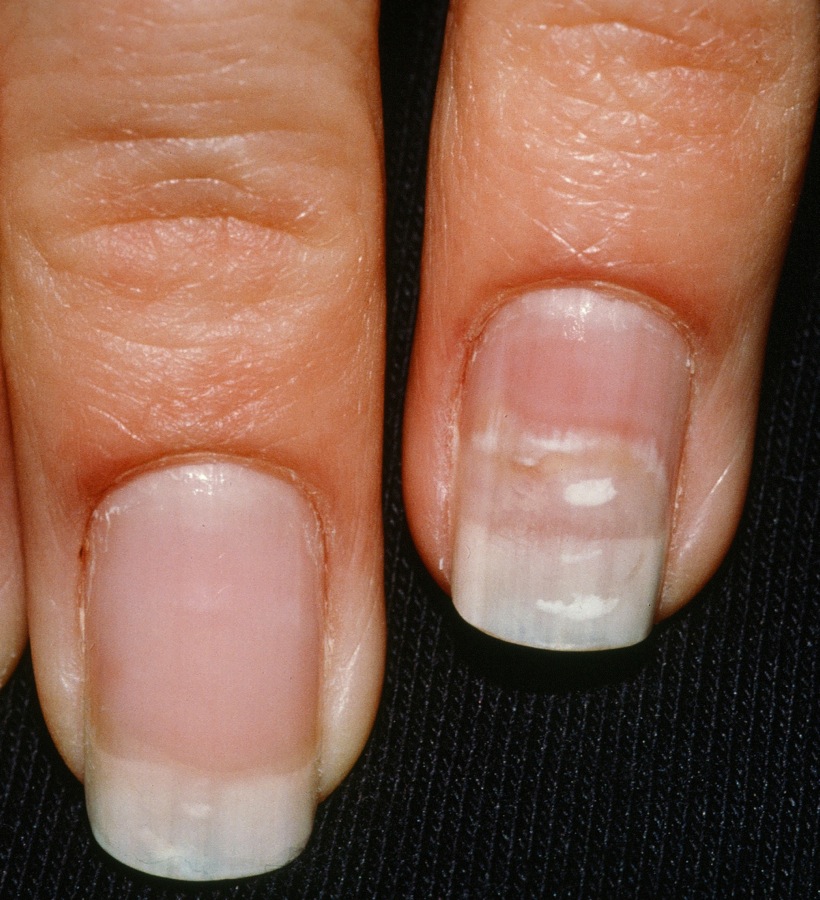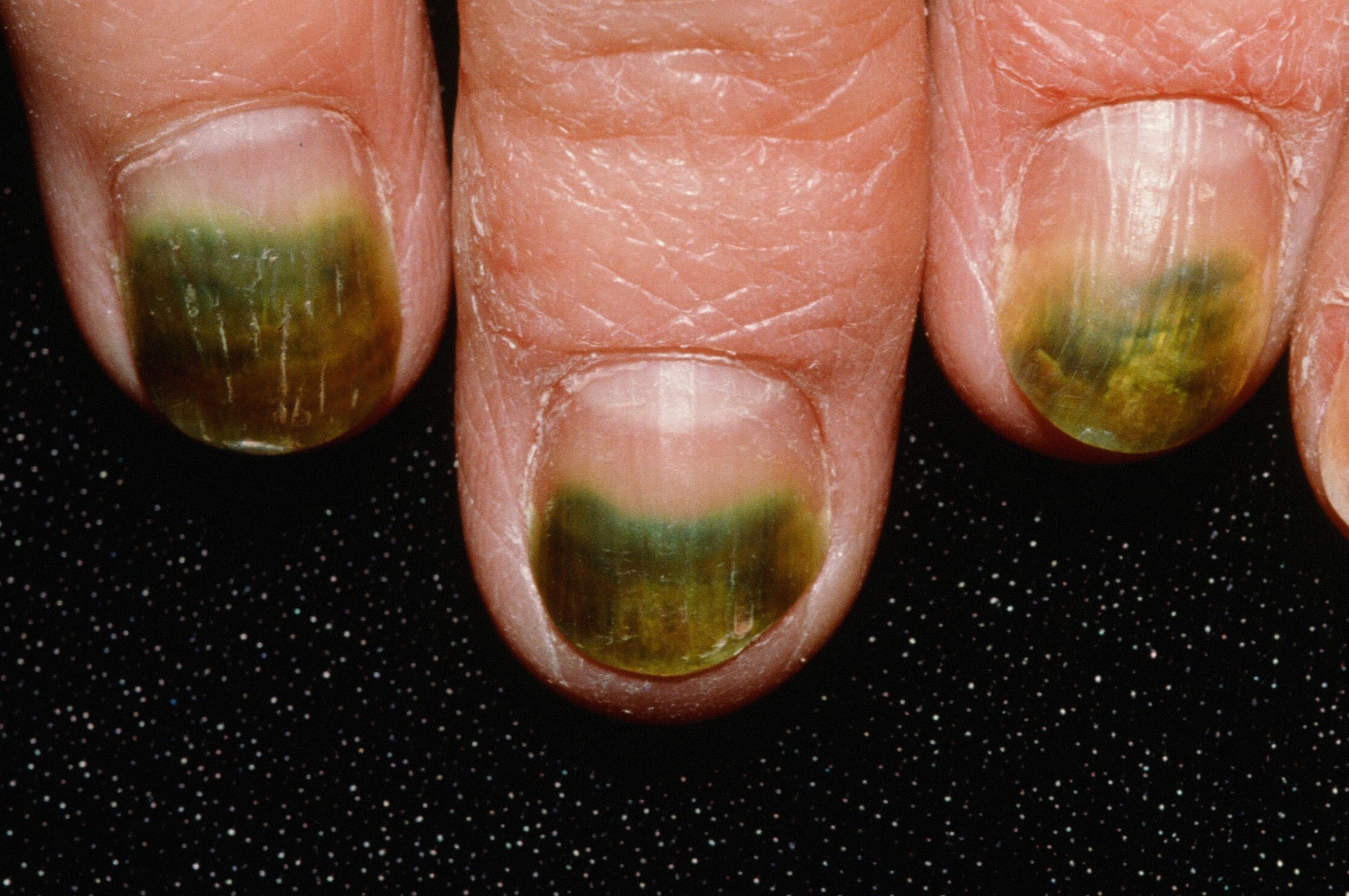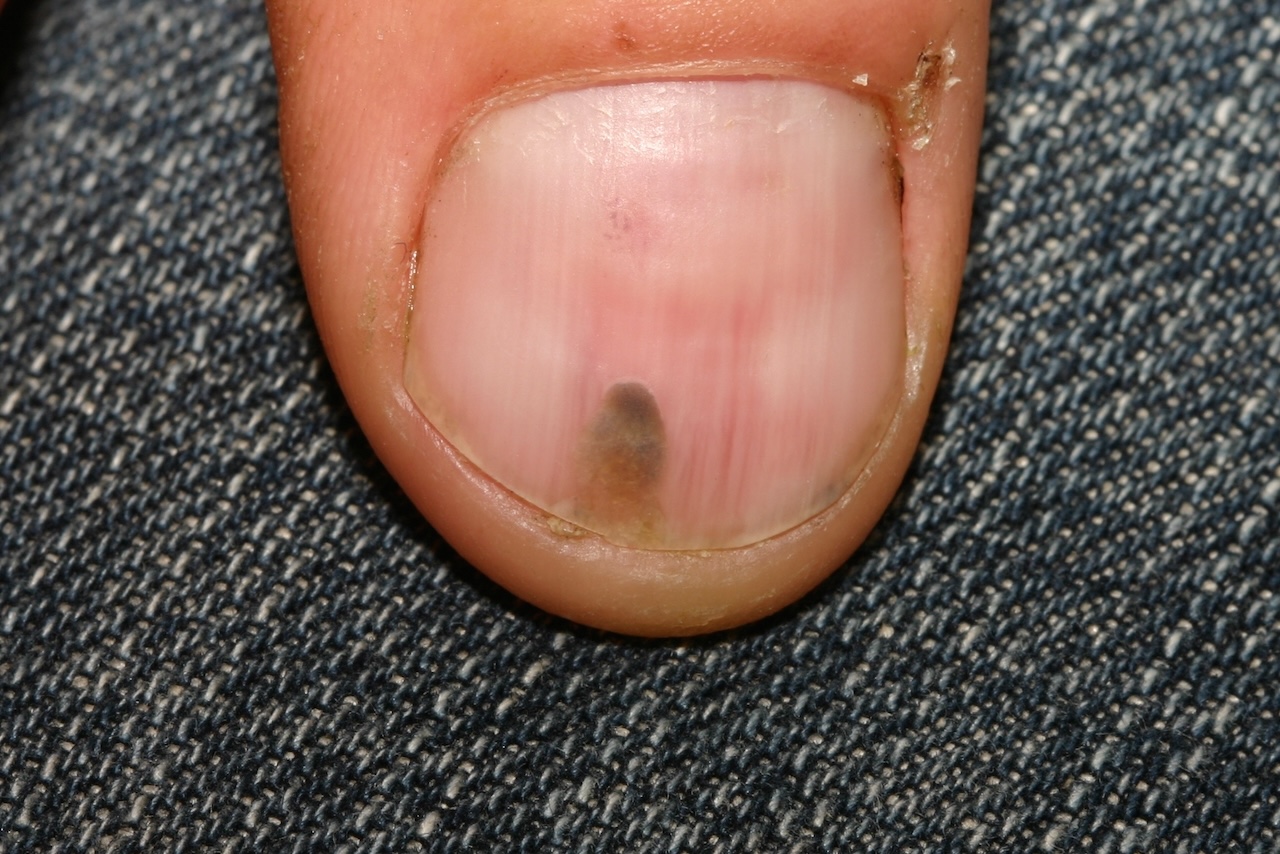
Onycholysis. Separation of the nail plate from the nail bed.

Onycholysis. Separation of the nail plate from the nail bed.
Onycholysis means separation of the nail plate from the nail bed. This usually occurs distally, such that the end of the nail lifts up. Onycholysis most commonly occurs in a woman with longer fingernails. Often the woman is cleaning under the nail, e.g., with a file, toothpick, etc. This cleaning tends to aggravate the problem as the tissue is irritated and more foreign matter and/or bacteria may be introduced. Any green color signals infection by the bacteria pseudomonas. Candida is frequently found.
The nail plate is separated from the nail bed--usually distally. Duration is important. Acute onycholysis is much more likely to be cured. Chronic onycholysis however, may be permanent. Chronic onycholysis is typical of the big toenail resulting from trauma. Rarely, hyperthyroidism may cause onycholysis, so called Plummer's nails. The primary process of onycholysis may become secondarily infected with Pseudomonas, creating a green color.
It is important to exclude other causes of onycholysis e.g., photoonycholysis (e.g. from doxycycline, onychomycosis and psoriasis. Some have used the term "simple onycholysis" to refer to the condition discussed here.

Pseudomonas infection of onycholysis of the nail causing a green color.

A mild case of onychyolysis with pseudomonas infection.
Homepage | Who is Dr. White? | Privacy Policy | FAQs | Use of Images | Contact Dr. White